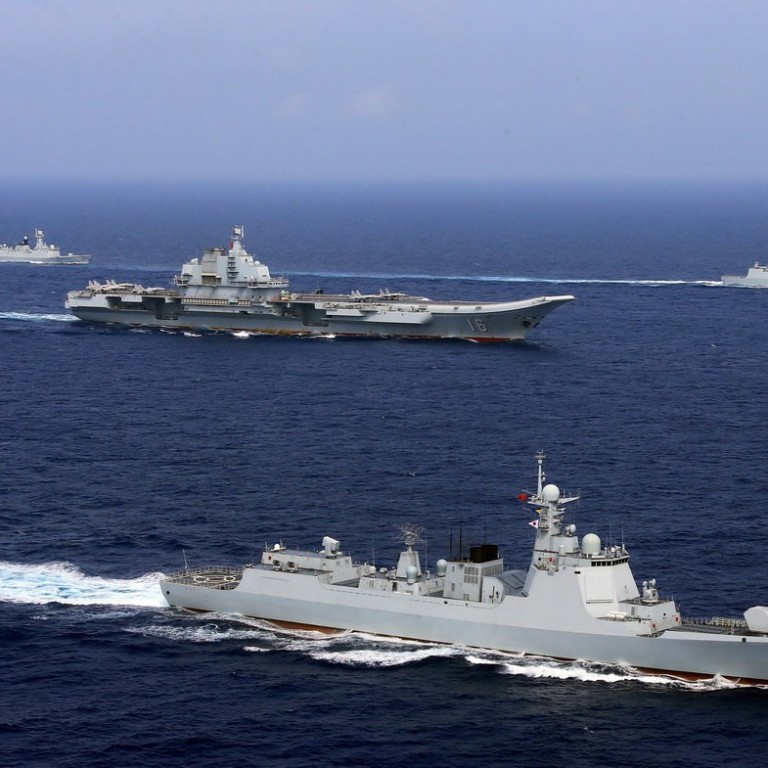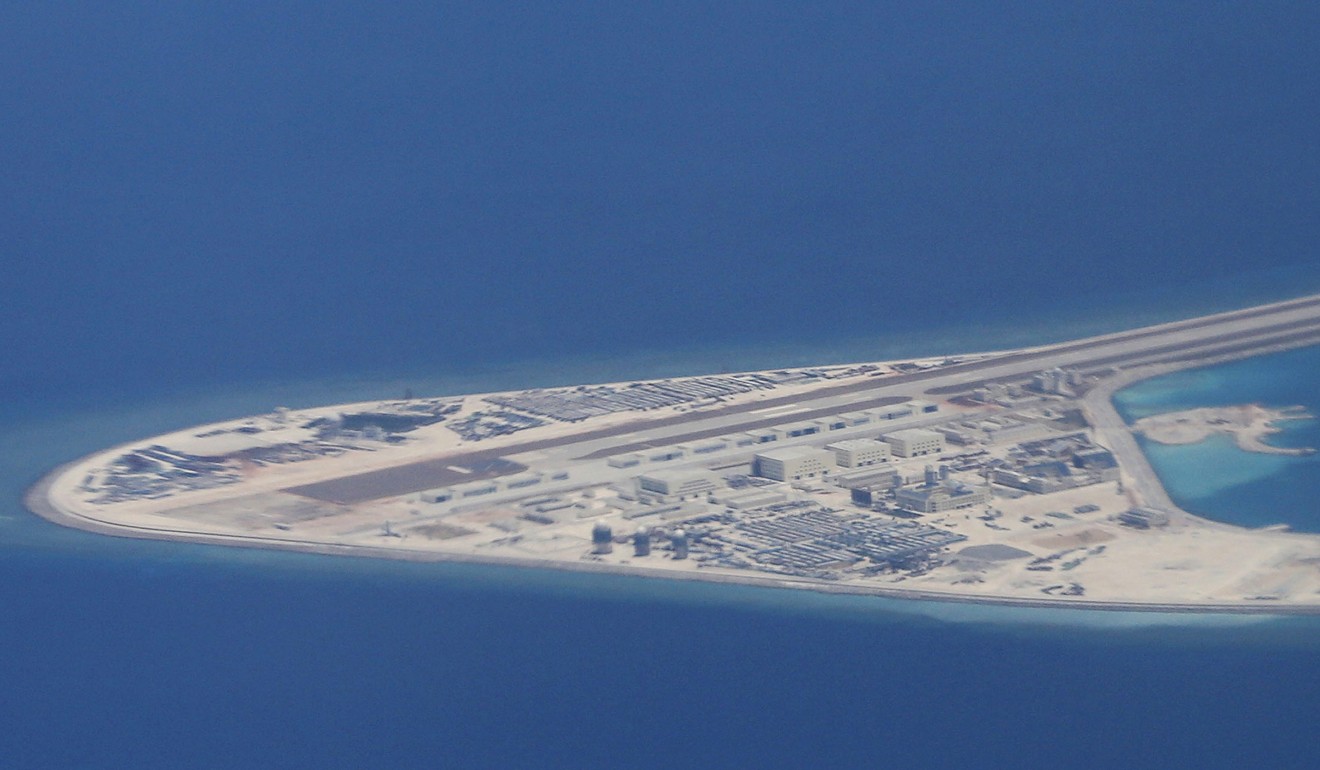
Can a new graphene coating save the Chinese military from rusting away in the South China Sea?
- Researchers are working on a new anti-corrosion material to protect weapons and buildings on artificial islands in the disputed waters
- Harsh conditions mean guns and buildings are corroding much faster than experts expected
“An artillery gun, for instance, was put out of service in just three months because of rust,” said a researcher involved in the project, who asked not to be named due to the sensitivity of the issue.
But it is not just weapons that are at risk. Radar and missile launch systems, harbour walls, airport buildings and runways, pipelines and even the foundations on which the islands are built can become quickly damaged.
To save these valuable assets, the Chinese military plans to coat them with graphene, a material developed by researchers at the University of Manchester in England in 2004. The substance is just one atom thick but is 100 times as tough as steel.

A military research institute in Shanghai is conducting a final test on the graphene-based coating before putting it into use, according to another researcher involved in its development.
The coating was developed in Ningbo, capital of east China’s Jiangsu province, and is said to be much cheaper than similar products on the market, costing 38-60 yuan (US$5.50 to US$8.70) per kilogram, compared with 300-900 yuan for other products.
China’s aircraft carrier Liaoning ‘no role to play in territorial disputes’
Though the coating has yet to be approved for military use, the researcher said it had already been applied in the civilian sector.
It had been found to be “extremely useful” in the chemical industry for protecting pipelines from corrosion against acid, high pressure and intense heat.
“These challenges are greater than those in the South China Sea,” the government researcher said.
“Our production lines are working at full capacity to meet demand.
“Future versions of the coating will be used on fighter jets and aircraft carriers, and will enhance their stealth capabilities.”

Hu Qigao, a professor at the National University of Defence Technology in Changsha, capital of central China’s Hunan province, said the construction of artificial islands between 2013 and 2015 was completed in a rush and had been plagued by problems.
“Due to historical reasons, our country has not fully studied the natural environment of the South China Sea and its impact on the engineering structure on the islands and reefs. The design and construction of the island reef projects was carried out against a tight deadline and without long-term, in-depth scientific evaluations,” he wrote in a paper published last year by the journal Defence Technology Review.
The adverse elements include high temperatures, humidity, fog, salty air and high solar radiation.
Chinese warship sails through Miyako Strait on way to Pacific
The speed at which equipment and materials degenerated was a surprise to the military, Hu said.
“Concrete structures started to disintegrate in less than three years and metallic equipment stopped functioning in about a year due to corrosion,” he wrote in the article.
These problems posed a safety hazard, and there were growing concerns about whether the facilities and the islands themselves could withstand a natural disaster such as a typhoon or tsunami, Hu said.
“Rapid corrosion not only seriously affects the normal service of the engineering structure and facilities, but also greatly increases the cost of its operation and maintenance.”
Rust is a major problem for any military. Fighting corrosion on fighter jets, ships, missiles and nuclear weapons costs the US about US$21 billion a year, according to a Pentagon report last year.
The People’s Liberation Army does not publish such figures, but the Chinese Academy of Sciences said in 2017 that corrosion caused China US$300 billion in 2014, or about 3 per cent of its gross domestic product.
Taiwan ‘watching’ as Liaoning sails into South China Sea
Zhang Lei, an associate professor with the corrosion and protection centre at the University of Science and Technology in Beijing, said the graphene coating is not without its problems.
Pure graphene is a good electrical conductor, so any cracks or scratches on the coating would accelerate the corrosion due to the accelerated flow of electrical current, he said.
The graphene thus must be blended with other materials to reduce the conductivity, and choosing the right materials is not easy, he said.
Cui Gan, an associate professor at the college of pipeline and civil engineering at China University of Petroleum who has studied graphene-based protective materials, said mass production of the thin carbon flakes could be challenging because they tend to get entangled with one another.
But this and other problems could be solved as research in laboratory continues on graphene, he said.
“It is a material of hope.”

